Cool Caterpillars
Cool Caterpillars!
Caterpillars come in many different shapes, sizes and colours, depending on what moth or butterfly they are going to turn into. They are fascinating to watch (but don't touch - the hairy ones can irritate the skin). The Very Hungry Caterpillar by Eric Carle is a classic story, and a great way to introduce little ones to the life cycle of the butterfly.
Of course caterpillars don't really eat ice cream, lollipops and salami! In fact, most caterpillars are fussy, so adult butterflies and moths only lay their eggs on one or two different types of plants that they know their caterpillars will eat. You can find out more from the Woodland Trust.
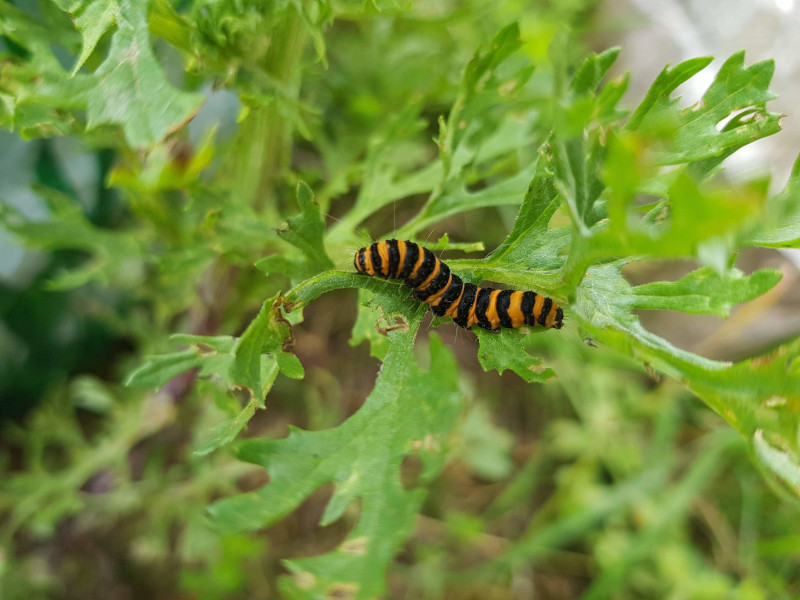
This cinnabar moth caterpillar feeds on common ragwort, a yellow wildflower. I spotted several at Lullingstone Country Park in Kent last summer.
Adult butterflies drink nectar from flowers. Butterfly Conservation have tips on what you can do to attract butterflies to your garden, as well as useful ID tools to help you find out what type of butterfly or moth you've spotted. They also have lots of downloadable activities including colouring sheets and puzzles.
Monkey Puzzle by Julia Donaldson and Axel Scheffler is another book that helps us to understand a butterfly's life cycle. Of course the butterfly didn't realise that mammal babies look like mini versions of their parents - this isn't true for insects!
Make a Caterpillar Friend
Here's a really easy craft using an empty egg box:
- Cut the top off your egg box.
- Cut the six 'knobbly bits' down the middle, so that you have a strip of three. Trim around the sides
- Cut a V shape into the side of each cup, so that the strip becomes springy, and you can make it move like a caterpillar.
Let your child decorate it however they want - you could use paints, pens or crayons, or stick on small bits of coloured paper. Hunt for two small sticks about the same size, and push two holes in the head of your caterpillar to create feelers. Don't forget to draw on a smiley face!
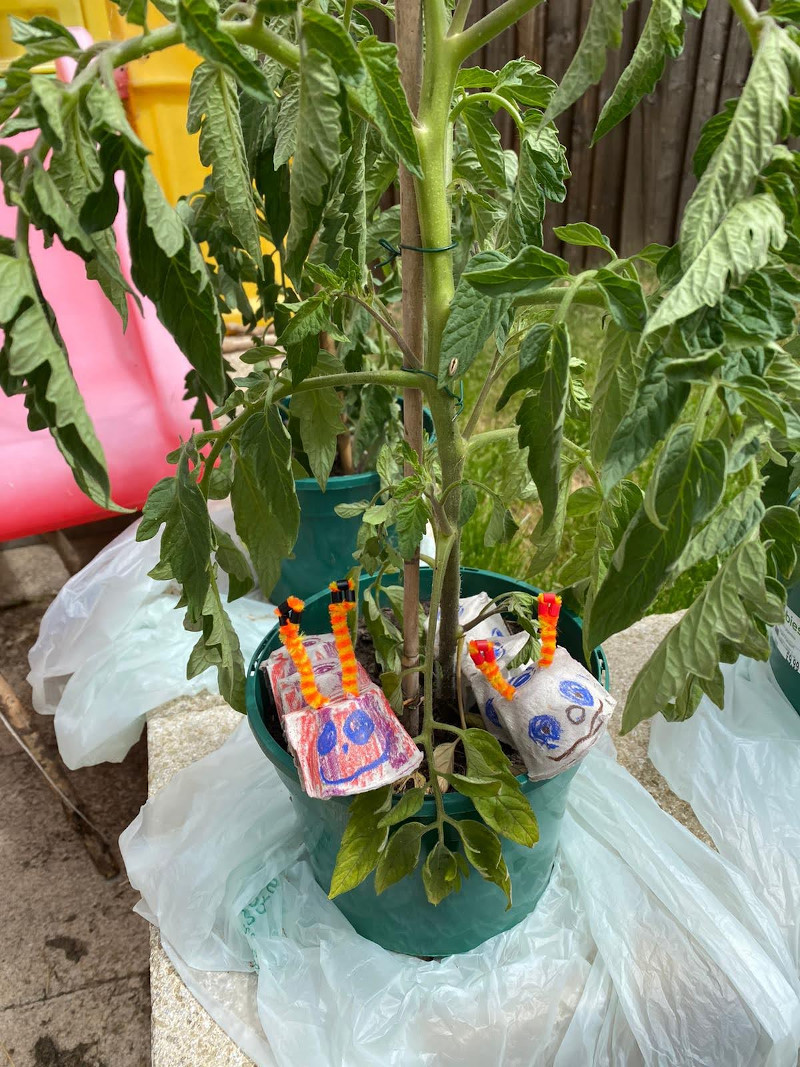
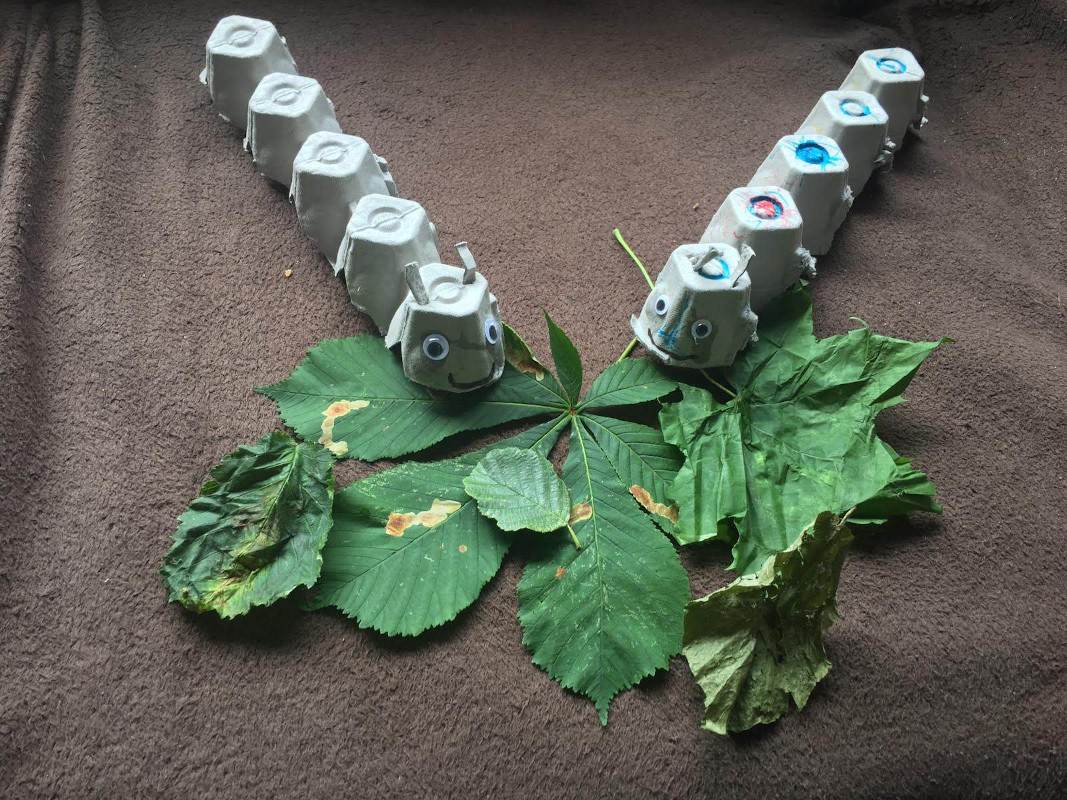
What a fantastic job James and Emily did with these cheerful chaps!
For more ways to use old egg boxes, check out this blog post from the spring.
All Together Now
Here's an action song that you can sing together to the tune of 'She'll Be Coming Round the Mountain':
There's a tiny caterpillar on a leaf (wriggle, wriggle!) x2
There's a tiny caterpillar, tiny caterpillar,
Tiny caterpillar on a leaf (wriggle, wriggle!)
He will eat all the leaves until he's full (munch, munch)...
A cocoon is what he's spinning for his home (spin, spin)...
Then he'll be a butterfly and fly away (flap, flap)...
The actions are: wriggle one finger like a caterpillar; munch with your hand; spin your index fingers around each other; flap both hands together as wings.
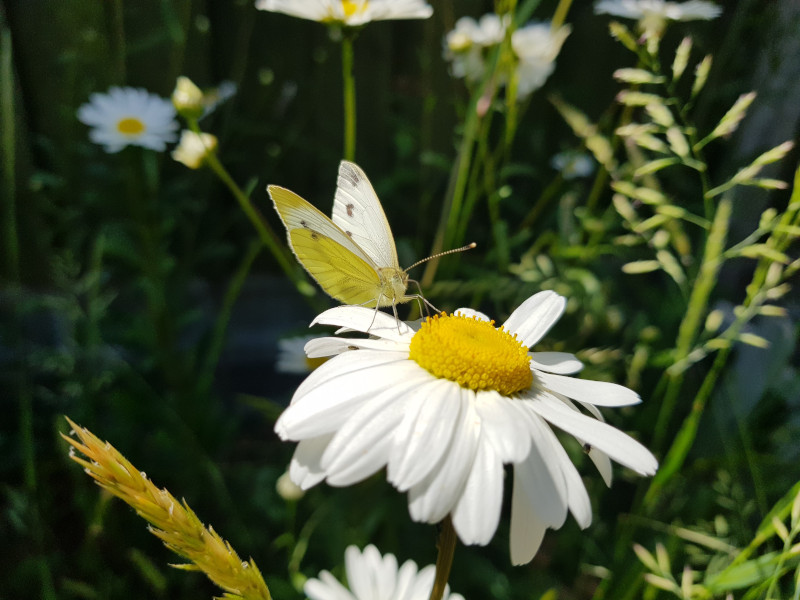
Dance Like No One's Watching
The Butterfly Dance by Suzanne Barton is a story that works on two levels. Firstly, it humanises the butterflies Dotty and Stripe to remind us that it's ok to play with someone who does not look the same as you, because friendship transcends our differences.
On an ecological level it helps us understand that insects are often highly specialised in what they eat (Stripe eats thistles, while Dotty prefers poppies), and that the best environment to support lots of different creatures is one that is diverse, such as the meadow at the end of the story.
This story is a good excuse for us to do some dancing! Try big, dramatic movements to 'Feeling Good' by Nina Simone (butterflies all havin' fun, you know what I mean), or for something more bouncy search for 'Green Garden' by Laura Mvula (And I'll fly on the wings of a butterfly, high as a tree top and down again).
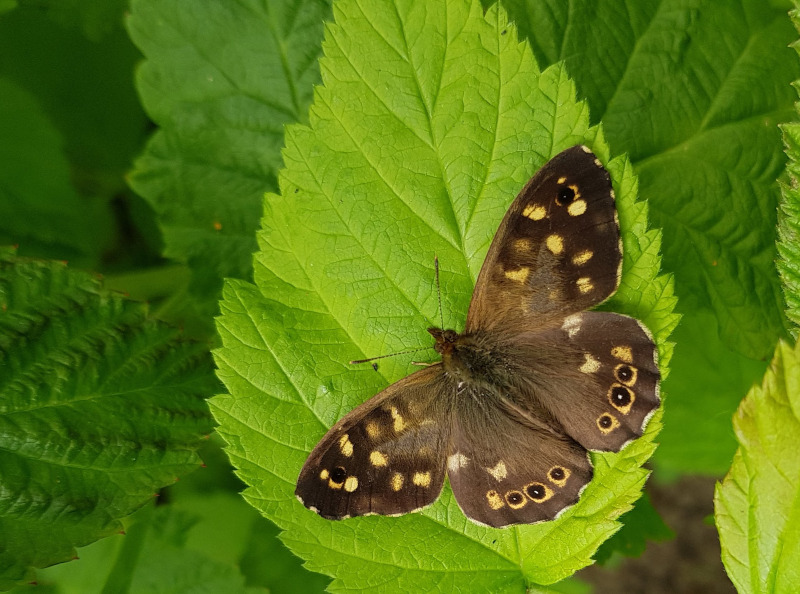
Fly high, butterflies!
Catch up on all my previous blog posts here.